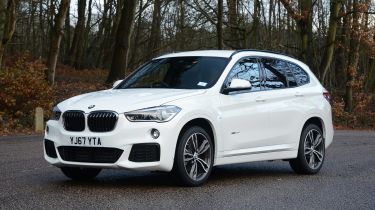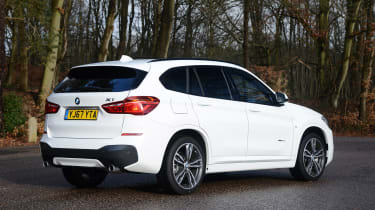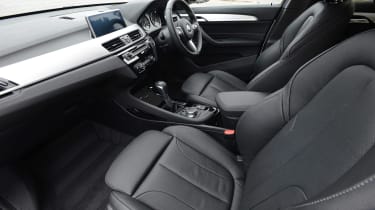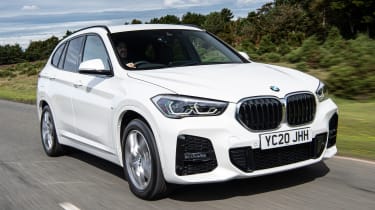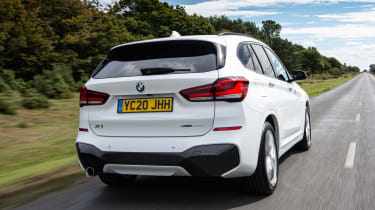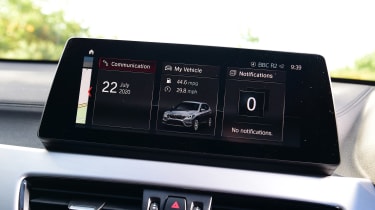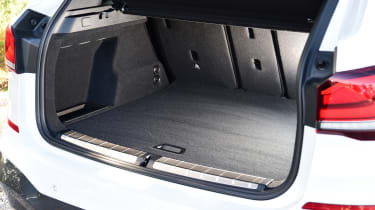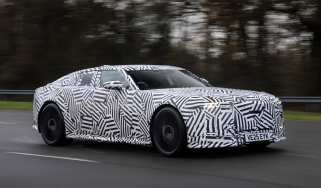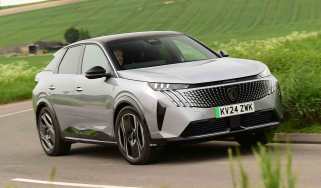Used BMW X1 (Mk2, 2015-2022) buyer's guide: great to drive, but expensive to run
A full used buyer’s guide on the BMW X1 covering the X1 Mk2 that was on sale in the UK between 2015 and 2022
Verdict
At the time, the BMW X1 Mk2 was the brand’s biggest-selling SUV globally, and it’s easy to see why. With premium brands and SUVs both flying high in the sales charts, a car that combines both of these was bound to do well. After all, even though the X1 is the smallest of BMW’s seven-strong range of SUVs, just like its bigger siblings this pint-sized crossover offers great dynamics, an impressive cabin and excellent refinement. You’ll pay for the privilege of owning an X1, though, with high running costs one of the most common gripes. Only you can decide if the X1 is good value, but it’s a great all-rounder in a very competitive segment.
BMW’s first SUV, the original X5, rewrote the rules on how a full-sized 4x4 could drive. Feeling more like a traditional estate car such as the 5 Series Touring and less like a wallowy, bulky off-roader, it set the tone for the firm’s other SUV and crossover models. One of the most successful has been the X1, which packages many of the X5’s strengths into a smaller and more affordable package.
Today, a used BMW X1 crossover is a great buy, offering engaging driving dynamics, lower running costs than its siblings and bags of premium appeal. These talents make it more useful in tighter, more densely populated areas, yet it’s equally as capable on the open road. The original X1 was released in 2009, while the second-generation model joined the line-up in 2015 and was on sale in the UK for seven years before being replaced by the current model in 2022.
History
The second-generation X1 went on sale in the UK in October 2015. Buyers could choose between the petrol-engined xDrive20i (with 189bhp) and the diesel-engined sDrive18d/xDrive18d (148bhp), xDrive20d (187bhp) and xDrive 25d (228bhp), all with a 2.0-litre displacement. All of these models offered four-wheel drive (xDrive), apart from the sDrive18d, which had power going to the front wheels only.
Used - available now
At first only SE, Sport and X Line trims were available, but within a month there was also an M Sport option.
A facelift in June 2019 brought a minor design refresh, with LED headlights fitted across the range, a three-cylinder 1.5-litre sDrive18i petrol option and an xDrive18d edition, while the xDrive25d was dropped. The X1 xDrive25e plug-in hybrid was added to the range in March 2020.
Prices
You can buy a used BMW X1 Mk2 from under £8,000 via our Buy a Car service.
Check the price of a specific BMW X1 with our free car valuation tool...
Which one should I buy?
For high mileage drivers, the diesel engines’ combination of muscle and efficiency make them a good choice. The plug-in hybrid makes sense for a lot of drivers thanks to its ability to run on electricity alone for short urban trips. In any case, the slick automatic gearbox is a good choice for any of the models.
All versions of the BMW X1 are reasonably well equipped – entry level SE models feature 17-inch alloy wheels, an electric tailgate, dual-zone climate control, cruise control, DAB radio, rear parking sensors, and automatic wipers and headlights. Sport trim will get you 18-inch allows, LED ambient interior lighting, sports front seats and racy visual upgrades for the interior and exterior. X Line models add leather trim, LED headlights and heated front seats. Top-of-the-range M Sport models benefit from sports suspension, an attractive exterior bodykit and Alcantara interior trim.
Alternatives to the BMW X1 Mk2
If you like the X1 but fancy something more overtly sporting the X2 might suit you better, because this more rakish junior SUV uses the same engines and transmissions, but looks much slicker. It’s a similar story where Audi is concerned: its smallest SUV is the Q2, which looks more distinctive than the bigger Q3, and like the X1/X2, both cars have user-friendly cabins, efficient engines and excellent build quality.
Sticking with German brands, the Mercedes GLA also offers excellent build quality and smart looks with impressive engines, while the slightly larger Range Rover Evoque looks great and has a luxurious cabin, plus it’s impressive off-road. Also worth a look are the Volkswagen Tiguan, Skoda Karoq, SEAT Ateca and Mazda CX-5, all of which are well made, good to drive and reasonable value.
What to look for
Suspension
Adaptive dampers were an optional extra; these transform the ride/handling balance, and are worth seeking out.
Seats
Have a look at the owners’ forums and you’ll see the sports seats are favoured over the regular items, which some find uncomfortable.
F48
The original X1 arrived in 2009 and this carried the E84 codename. The second-generation X1, which we’re covering here, was codenamed F48
Tyres
All X1s got conventional tyres, with run-flats (leading to a stiffer ride) as a no-cost option depending on which wheels were fitted. Bear that in mind on a test drive.
Interior
For decades BMW has focused on making its interiors as user-friendly as possible, with clarity taking priority over design flourishes, and this largely applies to the X1. The dash is clearly laid out, the build quality is exceptional and the cabin is both spacious and versatile. The X1 has enough head and legroom
in the back seat for three, while the 505-litre boot can stow an impressive 1,550 litres if the rear seatbacks are folded down.
The X1 gets a user-friendly and fairly comprehensive infotainment system with sat-nav as standard, and the iDrive rotary controls work extremely well. Some buyers may wish to look out for used examples fitted with the more advanced Tech Pack, which was a £1,250 option when new and brought a larger, 10.25-inch screen and a head-up display.
Running costs
All X1s have condition-based (variable) servicing, which means the car flags up when attention is needed. The system takes the condition of a wide range of items into account and indicates when work is due, but only those parts that need replacing will be renewed, so no two service costs are the same. However, services are usually needed every two years or 16,000 miles (diesel)/18,000 miles (petrol). Brake fluid should be renewed every two years. All X1 engines are chain-driven, so no cambelt replacement is needed.
Recalls
The second-generation BMW X1 has been recalled 11 times so far. The first two campaigns were launched in January and February 2017, and both affected X1s built between September and December 2016, some of which had been fitted with faulty airbags.
A manufacturing fault in the front axle led to a recall in July 2018; a month later, faulty crankshaft sensors caused the next action. Leaks from the exhaust gas recirculation cooler (with the risk of fire) led to a recall in December 2018; incorrect rear light fixings led to the next recall, in March 2019. The most recent four recalls came in April, June, August and October 2020, and were respectively issued for faulty steering assemblies, problematic airbags, faulty exhaust gas recirculation (EGR) coolers and plug-in hybrid battery glitches.
Driver Power owner satisfaction
The X1 Mk2 came 74th out of 75 in our 2021 Driver Power new car survey, which is a poor result. Even so, owners really were impressed by the X1’s performance and balance between touchscreens and physical buttons on the dashboard, but it was let down for its perceived value for money as a new car. As a cheaper, used purchase this is likely not to be the case.
BMW X1 review: what we said
Extracts from our BMW X1 test drive in November 2022
The BMW X1 remains a desirable choice in the hotly contested SUV class. Originally little more than a high-riding hatch, the X1 has evolved into a great all-rounder, with chunky styling and lots of interior space for the family buyers it’s targeted at.
Yet despite its versatility, the X1 remains good out on the road, and keener drivers will find it a more engaging car than the softer, less well balanced setup of some rivals. Both front- and four-wheel drive versions acquit themselves well, and BMW’s three- and four-cylinder petrol engines offer convincing performance and running costs.
Engines, performance and drive
Unlike bigger BMW models, the X1 is available with front-wheel drive. The facelift didn’t change the chassis set up, which is no bad thing. The UKL2 platform that underpins it, shared with sister company MINI, features a strut-type suspension set-up at the front and a multi-link axle at the rear. Adaptive dampers are available as an option on the M Sport only, and we'd recommend adding them, as they bring big benefits for the X1's ride and handling.
After only a few miles behind the wheel of the X1, it’s clear that this is the most driver-focused model in the small premium SUV class. It feels more like a conventional car than an SUV because you sit lower, but this means it also feels sportier.
Combined with weighty steering and less body roll than most rivals, it offers more grip and corners harder, making it the more involving choice. There are different drive modes, and with the adaptive dampers connected to the toggle switch that selects these different settings, the X1 feels alert in Sport mode. Yet the ride is never as crashy as in some rivals, even in the stiffer setting.
In Comfort mode the X1 is surprisingly absorbent, even with the larger wheel options offered by BMW. The suspension filters out suspension movements with finesse and keeps things level. This means it’s more comfortable around town and on the motorway than most rivals, while the engine isn’t quite as noisy, either.
The four-wheel-drive xDrive20d model uses an intelligent all-wheel-drive system that can send power to the front or rear when either axle senses slip, while it comes with an eight-speed automatic gearbox as standard. Don’t go thinking you can take your X1 too far off the beaten track, though. While hill descent control is included, this isn’t the kind of car you’ll go mud plugging in at the weekend.
0-62mph and top speed
UK buyers have the choice of two diesel and two petrol engines in the X1. All offer decent performance and great economy. There’s also a plug-in hybrid version which is the most economical of all.
The hybrid system produces 217bhp and 385Nm of torque – and BMW claims the drivetrain offers maximum electric-only range of around 32 miles at speeds of up to 84mph, while 0–62mph takes 6.9 seconds and a top speed of 120mph.
At the test track the X1 xDrive20d we tested was slightly faster than a Volvo XC40 D4, beating it by six tenths from 0-60mph, with a time of 7.6 seconds. It was also a few tenths faster from 30-50mph in the lower gears, while this advantage increased between 50-70mph in the higher gears. The engine is more refined and the gearbox a little snappier to change in manual mode as well, tying in with the extra focus placed on the driver. There’s nothing to split the transmissions or the traction the four-wheel-drive systems offer when cruising, though, because both are smooth.
The automatic gearbox is likely to be the top pick transmission. It’s nicely refined and changes gear with precision and pace. It’s a bit jerky in Sport+ mode, but leave it in Comfort and you won’t be disappointed.
MPG and CO2
The three-cylinder turbo petrol sDrive18i has claimed economy of up to 45.6mpg and CO2 emissions from 141g/km with the manual gearbox and 44.1mpg and 145g/km for the automatic version. Move up to the turbocharged four-cylinder sDrive20i, and economy only dips a little, to 42.8mpg, and emissions rise to 149g/km. This model comes with the eight-speed auto as standard.
Bar the hybrid version, the diesels are the most efficient models in the X1 range, with the front-wheel drive sDrive18d returning the best economy of 56.5mpg with the six-speed manual. When fitted with the eight-speed auto and four-wheel drive, economy drops to 51.4mpg. Emissions are 130g/km and 136g/km, respectively. Adding xDrive to the 18d sees the figures drop to 51.4mpg and 144g/km for the manual. At the top of the range, the xDrive20d is auto-only and can also manage 51.4mpg and emissions from 143g/km in SE trim.
BMW claims the xDrive25e will achieve a fuel-efficiency figure of 156.9mpg, with CO2 emissions of between 40g/km and 41g/km depending on the trim level. Its 10kWh battery provides an all-electric range of up to 30 miles, although you can expect around 20 or so miles in real-world driving. Charging takes around five hours using a standard three-pin plug, but this can be cut to 3.5 hours using a 7.4kW home wallbox.
Interior design and technology
The original BMW X1 was little more than a pumped-up, high-riding alternative to the 1 Series hatchback. When it was launched in 2009, the small crossover class was pretty new, so the design of these cars was in its infancy. But when later models arrived, it was clear that a more SUV-inspired look was taking hold, so BMW made the X1 Mk2 look more like a shrunken X3 than an inflated hatchback.
The facelift took this further with new kidney grilles, new headlight graphics and all-new bumper designs (in xLine trim they gain a faux skid plate). A new set of wheel designs should cater for those wanting a sporty-looking SUV, especially in M Sport trim.
The distinctive C-shaped rear window line is pure BMW design, and overall the echoes of X3 in the X1's shape are clear to see.
As standard, there are 17-inch wheels on SE models, while black plastic is used around the wheelarches and bumpers. Go for a Sport model, and you get bigger wheels (which don't spoil the ride) and tweaked exterior trim, while xLine models get gloss black exterior trim and a different wheel design. At the top of the range, M Sport cars feature body-coloured trim and lowered suspension for a sportier look.
Inside, cloth trim is standard, while Sport models get red flashes of trim on the seats and dashboard. xLine cars get leather and wood options, while the M Sport versions add signature blue trim and specific M steering wheel and badging.
Sat-nav, stereo and infotainment
Navigation is standard on the X1 range, but you can upgrade to the more advanced tech pack for around £1,250. This brings BMW Navigation Plus and a larger a head-up display to put more information on speed and navigation instructions in the driver’s eye line.
The beauty of the system is the simplicity of the controls. The iDrive rotary wheel has been refined over successive generations to the point where it’s the most intuitive and easy set-up to use on the move. With a logical menu layout and sharp graphics, it’s a great package; we just wish you didn’t have to pay extra for it although the standard 8.8-inch screen isn’t bad to use. Apple CarPlay is fitted as standard, but there’s no such luck for Android fans, as Android Auto isn’t available.
Practicality, comfort and boot space
The move to a larger SUV-style body has boosted the X1's practicality. However, while it's larger than before, the X1 is still a relatively compact SUV, with a footprint that's no larger than a BMW 1 Series hatchback. The real benefit comes in the shape of its higher driving position, although it's lower set than some small SUV rivals.
There are loads of handy touches, too. For example, you can order your X1 with a fold-flat front passenger seat, and all cars can hold a one-litre water bottle in each of the four doors. BMW’s Extended Storage is standard, meaning there are nets and tie down points dotted around the cabin – and all cars come with an automatic tailgate. Visibility is good and the model is easy to manoeuvre, too.
Size
The BMW X1 is 4,439mm long, 1,821mm wide (less wing mirrors) and 1,598mm tall. That gives it more upright proportions than the original X1, but does mean more space has been created in the cabin.
Leg room, head room & passenger space
Room inside the cabin is on par with the Volvo XC40, offering a good level of space in the rear and decent storage up front. The X1 is comfortable, too. There’s loads of room in the back and enough head and legroom for a six-foot adult to sit behind a relatively tall driver. The old model was criticised in this area, so it’s great to see that BMW has listened to feedback and improved the X1 where it mattered most.
Boot
The 505-litre boot is 85 litres bigger than before, and when you fold the rear seats down there's a 1,550-litre load area, which is a whopping 200 litres more than you’ll find in the old X1. Compared to its rivals, the BMW X1 is 45 litres bigger than the Volvo XC40 in five-seat mode, and 55 litres bigger than the MINI Countryman, which shares the same platform.
Come and join our WhatsApp channel for the latest car news and reviews...

